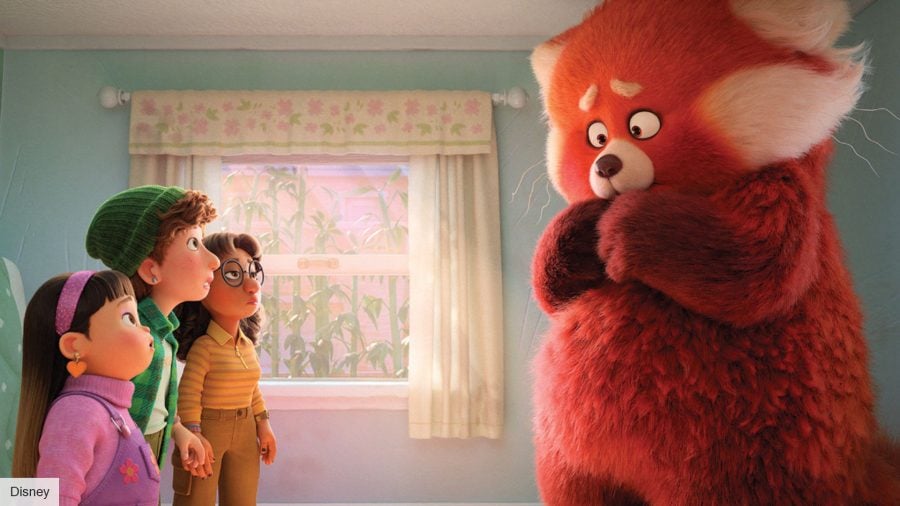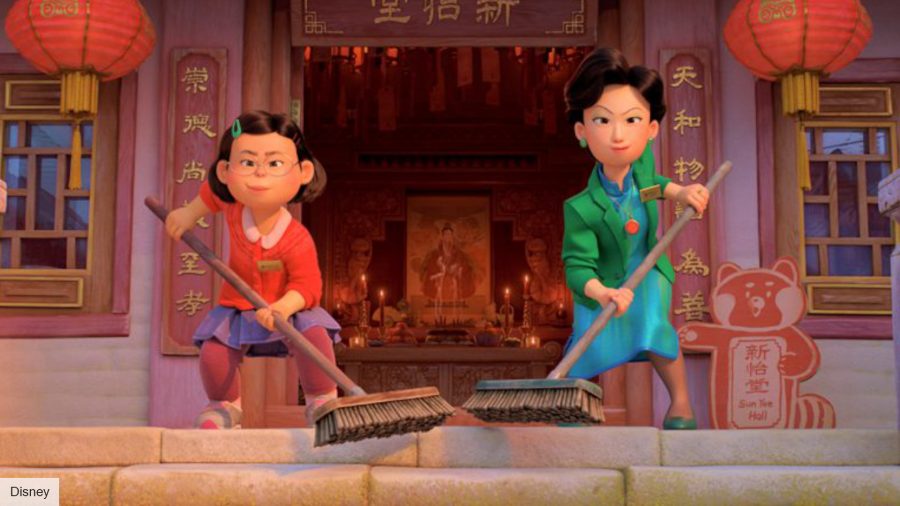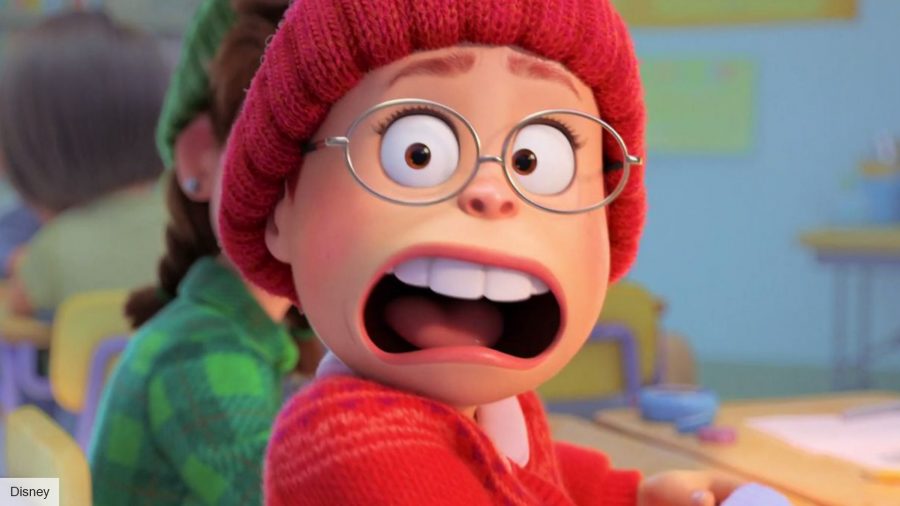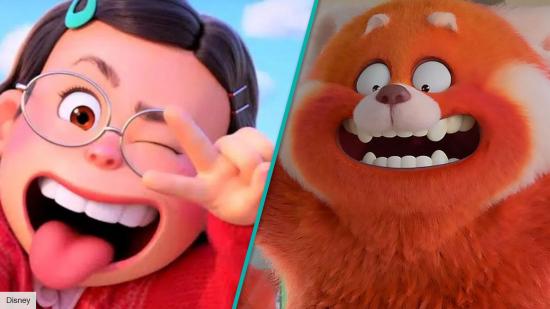Our Verdict
The engaging cast, family themes and relatable struggles show the director really embraced her inner panda in her feature-length debut
On the surface, the broad plot of Turning Red seems pretty straightforward. 13-year-old Mei (whose eccentricity and personality is brought to life by newcomer Rosalie Chang) transforms into a red panda due to a random hereditary ‘quirk’ and must navigate through the usual slice-of-life dramas like school, home and boys while also adapting to this bizarre new double life until she is able to rid herself of the ‘panda’ for good.
Of course, with Mei’s transformation serving as the catalyst of her journey to self-acceptance, the ending of the fantasy movie can be smelt a mile off — but the simplicity of the plot actually serves the movie well.
This is because the heart of Turning Red isn’t a complicated plot, but a complicated relationship: namely, the relationship between Mei and her mother (whose simultaneous hardness and vulnerability are showcased brilliantly by Sandra Oh). In essence, Turning Red is a movie about relationships, with Mei’s relationship with her family, her friends and herself all taking centre stage in this animated movie.
We see the nuances of Mei and her mother’s relationship: from the way they prepare food together to their daily routine at the temple: and in doing so, you a sense of layered intimacy about their relationship very quickly, which helps its status as the central conflict of the movie seem all the more important.
In most Pixar and Disney movies, the mother is either dead or completely two-dimensional — and that’s not on account of the animation. This is why the exploration of a mother-daughter relationship serves as a welcome change from the Pixar movies we have seen so far.
Another central theme in Turning Red is, of course, puberty, with Shi saying in a press release that “we’re basically using the red panda as an adorable metaphor for the very unadorable phenomenon of puberty.”
Although Disney has a reputation for shying away from conversations about puberty and sexuality, Turning Red is unapologetic in its bold portrayal of both: from several open discussions about sanitary pads to the exploration of raging hormones — especially when it comes to bodega boys and the clearly *NSYNC-inspired boyband 4*TOWN.
Panda or no panda, Turning Red is probably the most realistic portrayal of puberty I’ve seen since Big Mouth — except, of course, the former is a lot less lewd and appropriate for younger audiences. But older audiences, especially women, will be able to relate to Turning Red too.
It’s no accident that the ‘inner panda’ only afflicts women in Mei’s family, and I can definitely relate to the intense highs and lows that only 13-year-olds really experience — although I obviously didn’t turn to a panda as a result of these feelings.

The sheer relatability of Mei’s experiences in the movie — including an excruciating, toe-curling sequence where her over-involved parent makes too many assumptions and causes her social suicide — makes it evident that Shi drew heavily on her own real-life experiences in writing the movie, which in turn makes it easy for us to apply the film to our own lives, too.
The wider world in which Mei inhabits is also littered with fun Easter Eggs which make it clear that the movie is very much set in the midst of the Y2K era — Tamagotchis, for example, make more than one appearance in the film, and end up playing a fairly important role for one character at the end of the movie.
In the mood for more Disney? How to watch Encanto
The film also appears to take inspiration from anime tropes and motifs at several points, which as well as helping to amplify how quintessentially noughties the movie is, helps to encapsulate the similarly hard-and-fast mood swings that go hand in hand with being a teenager.
The presence of ancestor worship, food as a love language, and the general day-to-day life of dual-nationality Chinese families is another incredibly insightful and important element of the movie. In mainstream media, the representation of family dynamics is often limited to Eurocentric perspectives.

This makes Shi’s incorporation of Chinese culture into her movie especially impactful and important because it not only means that young people from multicultural backgrounds are represented, but it also provides Western audiences with the education of different cultures that they may have been lacking in before.
Try something new: The best Netflix series
It’s vital that multiculturalism is normalised in 2022, and Turning Red recognizes that. As universal as some experiences of puberty and growing up might be, the role culture and racial identity play in young people’s lives shouldn’t be understated.
While the movie overall was powerful and entertaining, there were a couple of weak spots. Firstly, the response people had to Mei (and her mother’s) panda made little sense or held consistency. It doesn’t make sense that Mei can wander the city as a giant panda, make national news, and then have the whole scenario forgotten about. I don’t know about you, but if I saw a giant panda running rampant, I wouldn’t exactly forget about it overnight, and I doubt the rest of the city would either.
And then, when multiple pandas showed up at the end of the movie and one especially large panda ripped apart a concert stadium and put the lives of thousands of people at risk, I don’t imagine them getting away with it with a paper fundraising chart. And then there was people’s reaction to Mei at school. Of course, pandas are cute, but teenagers are probably the most loose-lipped breed out there. Are you telling me not a single one of them spilt the beans about the giant panda taking selfies in the cafeteria with classmates?

It would also have been nice to see certain characters like Mei’s friendship group and her father fleshed out a little more. Although their importance to Mei is clear, and they’re obviously designed to be supporting characters in comparison to Mei and her mother, at times it felt like the development of other important figures in Mei’s life was sacrificed in favour of fleshing out her relationship with her mother as much as possible.
Three’s a crowd: The best romance movies
Several plot points like this let down the film slightly, but they’re rather picky points that don’t make a huge difference to the quality of the film as a whole. And it doesn’t stop the movie from solidifying that emotional gut punch during its climax before prompting you to reflect on yourself. “We’ve all got a hidden beast,” Mei says in the closing voiceover of the movie. “We’ve all got a messy, loud, weird part of ourselves hidden away, and a lot of us never let it out. But I did. How about you?”
Breaking the fourth wall at the end of a movie is always a risky move, but it works perfectly with Turning Red, and cements its status as a movie that will have people thinking long after the credits roll — and might even change their lives.
Turning Red is available to watch on streaming service Disney Plus from March 11, 2022.
